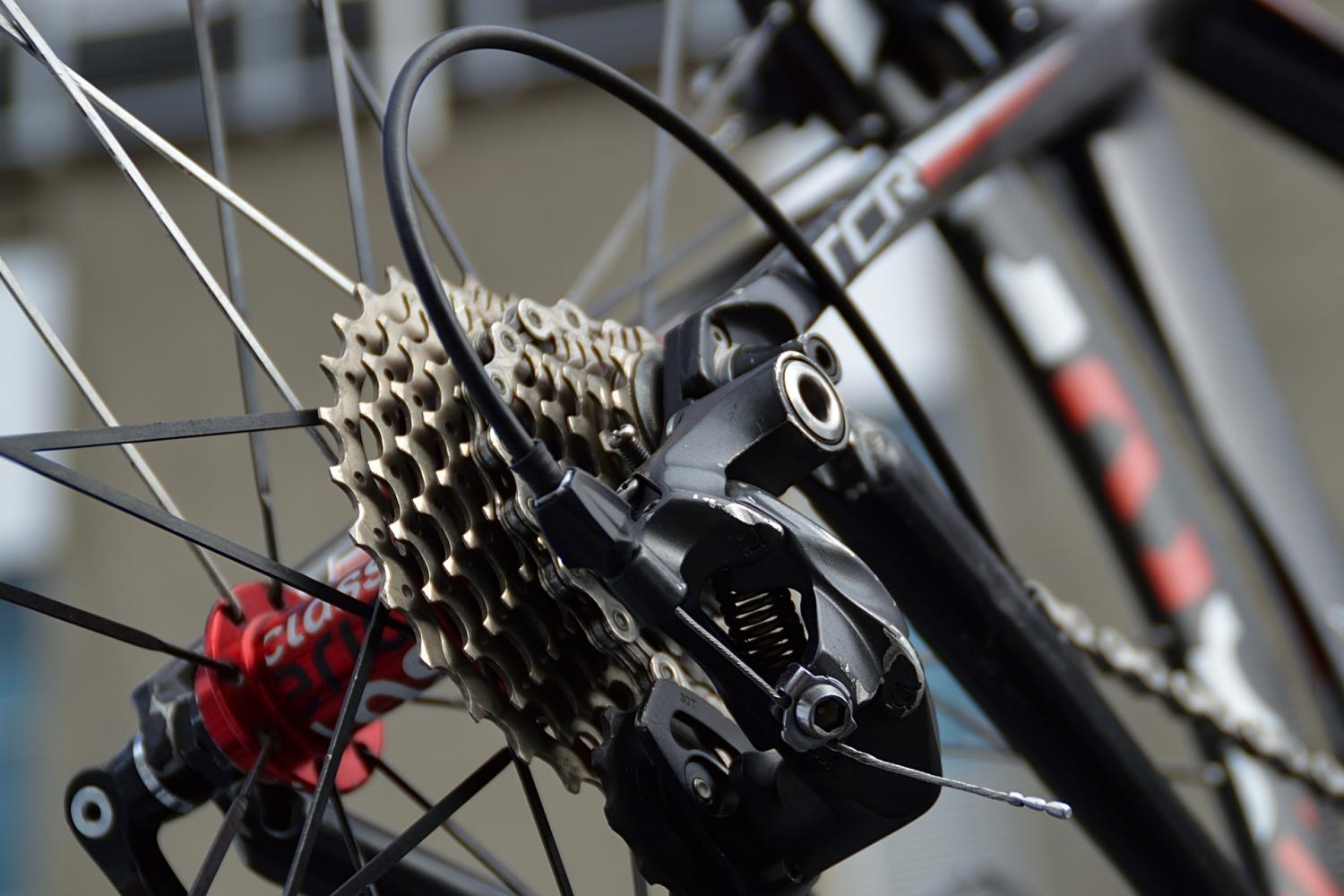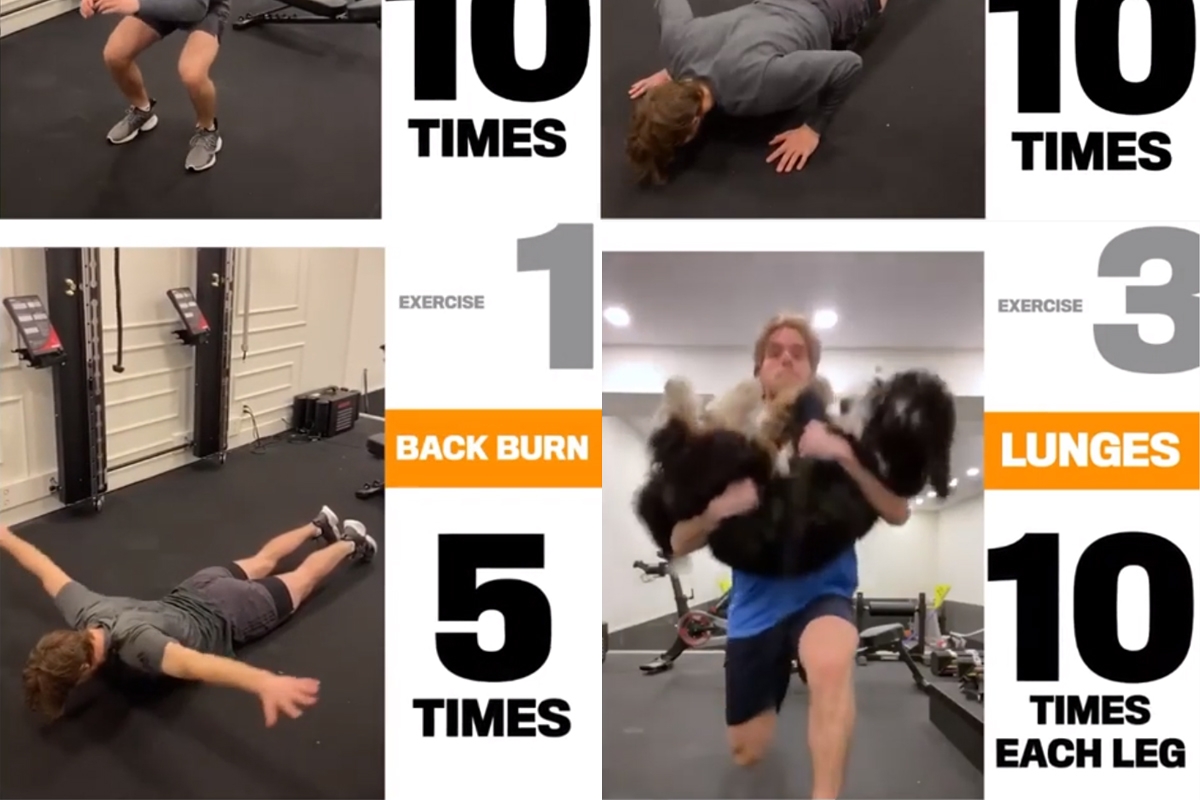
“Murder truck” set free: Low precedent set in death of local cyclist
When Nadia Robinson woke up on June 28, 2015, she was happy. She poured herself a cup of coffee and made a Facebook status saying so. Her oldest son had just graduated from high school and she and her family had moved into a new home in Riverside South, Ottawa. Although she was not with the father of her children, Andy Nevin, they were cohabitating so they could both be present parents for their two teenage boys Bryce Nevin and Jacob Nevin. They had stayed up late the night before talking excitedly about the future and how much their boys were going to love their new home.
The plan for the day was to head back to their old house to patch and paint. When Andy didn’t emerge from his room Robinson assumed he had slept in but as the morning wore on Andy was nowhere to be found. “I started to get angry and worried,” Robinson says.
“I don’t know why he would leave me with all of this,” she thought, thinking of all the work they had to do at the old house. “This isn’t like him.”
Robinson asked her youngest son Bryce to take his bicycle and go get some milk from the store. When Bryce went to get his bike, he realized it was gone and they assumed that Andy had taken it earlier that morning to ride the 12km back to their old home in South Keys to start repairs. “I was mad that my dad took my bike,” Bryce remembers.
When Robinson and the boys arrived at their old home Andy was not there. They started doing the patching and painting but it was soon time to take Bryce to soccer practice. Robinson tried to call Andy on his cell phone but couldn’t get through because there were no minutes left on it. She called her best friend Lindsay Nevin (who is married to Andy’s brother Brent Nevin) and expressed her concern and anger about Andy’s disappearance.
“What colour was the bike?” Lindsay asked.
“Green…why?” Robinson replied.
“There was a fatal crash with a green bike this morning,” Lindsay said.
“I just lost it,” Robinson remembers.
Andrew Jason Nevin, age 39, was struck and killed at 5:55am on June 28, 2015, heading east on Leitrim Road in Ottawa. The driver of the white Ford F-250 truck, Deinsberg St-Hilaire, didn’t even slow down, fishtailing through the intersection of Leitrim and Albion Road leaving Andy’s mangled body in the ditch.
The Nevin family had gathered at Lindsay and Brent’s home when police came to the house to deliver the news of Andy’s death. They were all in tears as the police told them that the EMS’ efforts to revive Andy were unsuccessful and he was pronounced DOA when he arrived at the hospital. Bryce isolated himself from the rest of the family and sat outside in the cold rain that had started to fall, feeling numb and empty. “To this day I still feel empty,” he says.
It was nine long days for the Nevin family before St-Hilaire was apprehended by police. During that time St-Hilaire did his best to cover up the accident. He ordered new headlights for his truck that day and took the badly damaged vehicle to Skysway Electronic Garage on Leeds Avenue to be repaired by family friend Shaun Nadeau. He also hid from police at Adam’s Airport Inn with the help of his then girlfriend (now wife) Crystal Johnston and half-brother Che Esprit.
Ottawa Police Service (OPS) Detective Constable Darwin Turner was the lead investigator on the case and, with the help of a surveillance team, arrested St-Hilaire on July 7, 2015. They also collected the damaged truck panels (which were spattered with Andy’s blood) from Skysway Electronic Garage as evidence and interviewed the owner of the garage, Nadeau. Initially Nadeau denied knowing anything about the Ford F-250, but when he was advised that this was part of a criminal investigation, he admitted to being paid cash to fix the truck.

Turner said that St-Hilaire confessed to him, after three hours of interrogation, that he was the one who hit Andy. He told Turner that he was on his way home after being up all night at a wedding and had momentarily dozed off at the wheel. He awoke to a bang and, after checking his rear-view mirror, assumed he had hit a mailbox and drove away. It wasn’t until days later, when he heard about the hit and run on the news, that he realized what he had done. He said “fear gripped his heart” when he realized he was the one who killed Andy but after consulting with his brother decided not to turn himself in. He said he feared being unfairly treated because he is black and he had endured racism at the hands of police in the past. He also denied being drunk, stating that he only had one drink as a toast at the wedding at he was the designated driver.
The Nevin family watched in horror as St-Hilaire was granted bail after being charged with failing to remain at scene of a fatal crash on Monday July 13, 2015. He was released with a $10,000 bond and under the condition that he surrender his passport and drivers license and live with his mother in Barrhaven. Robinson remembers St-Hilaire’s mother saying at the bail hearing that she would just “give him a couple of slaps” if he got out of line, a statement that she believes showed a complete disrespect for the severity of St-Hilaire’s actions. “That should have never happened in a court room with a death involved,” she says. “They never took it seriously from day one.”
This belief was further compounded when the family learned that St-Hilaire had received a bail variance on December 7, 2015. This allowed him to drive the very same Ford F-250 truck that he had been driving when he hit Andy so he could resume his work as a landscaper. Andy’s family, who lived close to St-Hilaire’s mother had to watch as the “murder truck” drove around their neighbourhood allowing his killer to continue to support his family while they were struggling to make ends meet. It was only donations through a Go Fund Me campaign that allowed Robinson and her sons to stay in their new house for the year-long lease. “I couldn’t afford $2200 a month,” Robinson said. She had to go into debt to help pay for Andy’s funeral arrangements.
To make matters worse, Robinson found out that she had an unbelievable connection to St-Hilaire. It wasn’t until months after Andy’s death that she realized that her former friend, Che Esprit, was St- Hilaire’s half brother. Esprit knew Bryce and Jacob and would often come over and play video games with them after school and on the weekends. Robinson even helped with the landscaping at Esprit and St-Hilaire’s mother’s house 12 years ago. She remembers that his mother brought them lemonade. “Che was a good friend. I think that’s what hurts the most. He knew that it was Andy and he still helped his brother cover it up,” Robinson says. “Blood is thicker than water but to this extent? It’s a big-time slap in the face.”
Esprit was never charged for helping his brother cover up the collision and evade police, nor was he put on the stand. Robinson says she only saw him in court once. Their eyes met for a brief moment, but he quickly turned away. “He completely disappeared out of my life,” she says.
The investigation into Andy’s death has made the Nevin family extremely skeptical about the credibility of the OPS and the judicial system. The original collision reconstruction report carried out by Turner and his partner Detective Constable Darrin Biggs, was firmly discredited by another detective with the OPS and a provincial constable from the OPP. Turner and Biggs’ report had placed the initial impact on the roadway, placing more fault on Andy, while the skid marks on the street clearly indicated that Andy was hit on the paved shoulder, one meter over the fog line. Veteran reconstructionist Detective Alain Boucher of the OPS said at the preliminary inquiry that a reconstructionist who came to Turner and Biggs’ conclusion would “have a lot of explaining to do.”
It was only after Boucher released his report that St-Hilaire was charged with dangerous driving causing death and obstruction of a peace officer. When Andy’s father, Kerry Nevin, had asked Turner previously why St-Hilaire had only been charged with leaving the scene, Turner replied that he had no reason to believe St-Hilaire had been speeding or driving in a dangerous way. The investigation by Boucher and by a video analysis and velocity extraction expert found that St-Hilaire had in fact been going 80 km/h in a 50km/h zone; thirty kilometers over the speed limit. Turner refused firmly when asked by Ottawa Life Magazine to comment on the case and his investigation. Kerry has since filed an OIPRD complaint against Turner and his actions involving the case.
Despite admitting to speeding, St-Hilaire pled not guilty to dangerous driving causing death and leaving the scene of an accident, both of which carry hefty jail time if found guilty. He pled guilty to obstruction of a peace officer which can lead to up to two years imprisonment.
It took over three years for St-Hilaire’s trial to come to court. Issues with attorneys on both sides caused the trial date to extend further and further into the future, keeping the nightmare alive for the Nevin family. They avoided Leitrim Road and were always on the lookout for the man with the white truck who killed their loved one and covered it up.
When the trial finally took place in October 2018, they were hopeful that with the evidence the crown had gathered they were going to see a guilty verdict on all counts. They were surprised when Turner, as the investigating officer, was not called up to the stand at any point during the three-week trial. “He was there the whole time passing out tissues and cups of water to my grieving family,” Kerry says. “I wanted to kick the shit out of him.”
Crown attorney Lisa Miles told Robinson that she thought they had it in the bag without testimony from Turner. Many people who had been following the story in the media over the past three years thought so too.
On November 2, 2018, Justice Catherine Aitken pronounced St-Hilaire not guilty of dangerous driving causing death and leaving the scene of an accident. “This is a disgrace,” Kerry shouted as he stormed out of the court room. Everyone was in shock.
“Despite the horrible and tragic consequences of this case I am left with a reasonable doubt as to whether Mr. St-Hilaire’s brief period of lapsed attention – possibly only a few seconds – was sufficient to find criminal liability for dangerous driving,” Aitken said at trial.
In order to have a guilty verdict for dangerous driving causing death the crown must provide evidence that the accused’s driving was a “marked departure from the manner in which a reasonably prudent person would drive under the circumstances.” Ottawa criminal lawyer Michael Spratt, who was not in court but followed the case closely, said that this can be extremely difficult to prove. “What needs to be shown in court for dangerous driving is very strict,” he says. “Exceeding the speed limit by itself may not be enough depending on the situation.”
In St-Hilaire’s case, Aitken thought that the speeding was not unreasonable because it was on a relatively empty road early in the morning. Civil litigator Patrick Brown of Bike Law Canada, a group that advocates for legal reform to prevent cyclists from being injured or killed, spoke out against Aitken’s ruling stating that, “at the end of the day, most people would perceive staying up all night and speeding like that as a marked departure from what a normal person would do.”
Aitken found St-Hilaire not guilty of the leaving the scene of an accident charge as she felt the crown had not proven beyond a reasonable doubt that he knew he had hit someone when he sped away from the accident.
It wasn’t just the Nevin family and the cycling community who felt Aitken’s decision was off the mark. In the days that followed, Kerry gathered 7200 signatures from people who wanted the decision appealed. He delivered the binder full of signatures to the Crown Attorney’s office. The response, received within a day, stated that an appeal would not be granted.
Being dragged through the courts for three years and the final not-guilty verdict has affected the Nevin family in irreparable ways. Diagnosed with PTSD, Kerry has not been able to work since the accident and has secluded himself in his dark basement apartment bent on finding justice for Andy. He has written a 20-chapter book on how he feels the justice system has failed his son. “Kerry is stuck in anger and he can’t get past it,” Robinson says, adding that most of her family don’t speak to him anymore.
Robinson says her eldest son Jacob, now 21, has lost motivation and is reckless with his life. “He always says, ‘I could be killed tomorrow so I’m going to live in the moment,’” she says. “He’s irresponsible.”
Despite struggles at school Bryce, 19, graduated but chose not to start his post secondary education while the trial was ongoing. He suffers from PTSD, insomnia, panic attacks and has had trouble with drugs and alcohol. He used to love playing soccer but hasn’t picked up a ball since his father was killed almost four years ago.
Robinson says she has tried to be strong for her boys. “We are all on different levels of grieving,” she says. “I’m the mom so I am going to tend to my children but if it were one of my boys I would be just as angry as Kerry. I’d be in the loony bin.”
During his sentencing hearing for the obstruction of a peace officer charge the Nevin family were given the opportunity to read victim impact statements. St-Hilaire stared straight ahead as Robinson, Kerry, Lindsay and Bryce told him directly how his actions had impacted their lives. “The people we were on June 27 are gone. The people we were to become never had a chance to exist. In many ways they died along with Andy that morning,” Robinson said in court. “We are people who are in pain and who have suffered and continue to suffer because there are some losses that can never truly be healed.”
When Aitken gave St-Hilaire the chance to respond he approached the bench, avoiding eye contact with the Nevin family, “My heart goes out to the family and I’m sorry for their loss and I’m sorry for my involvement in that loss,” he said with robot-like expression.
At the sentencing the crown argued for a 12-month jail sentence while the defense suggested probation and community service seeing as St-Hilaire had no previous criminal record and has shown remorse for his actions.
On Wednesday April 17, 2019, Aitken sentenced St-Hilaire to a one-year conditional sentence with 100 hours of community service and a curfew from 10pm to 6am. She also ordered that he surrender his passport. The defense was concerned that the curfew might interfere with St-Hilaire’s work as a landscaper and Aitken said she would allow his case worker to amend the times he had to be at home to work with his schedule, as long as he was at home for the full 8 hours. Aitken stated that she felt a period of incarceration in the home would be a strong enough deterrent seeing as St-Hilaire was clearly sorry for what he had done, and he is not deemed a danger to society. “I have no doubt that St-Hilaire feels remorse for his actions,” Aitken said at the sentencing. “I believe he wanted to do the right thing but was afraid.” The judge also accepted testimonials from friends, co-workers and his pastor that stated he was a decent, honest person who acted out of character when he hid from police.
Kerry stormed out of the courtroom and Robinson broke down in tears. “It’s just a slap on the wrist,” she said after the sentencing. “It’s a very sad day for cyclists, pedestrians and our children. It’s setting such a low precedent for other people.”
Like Robinson, Kerry is concerned about the precedent Aitken has set in this case. “Justice has been robbed from Andy,” he said angrily. “And it’s going to be robbed from a lot of people going forward.”
Robinson says the only thing she and her family can do now is try and move on. St-Hilaire will be allowed to continue to provide for his family while hers struggles to live life without their brother, father and friend. “Today, that’s it, we can’t change what happened,” Robinson said emotionally outside of the courthouse on Elgin Street. “But we can try and make Andy proud and that is what we’re going to do.”









